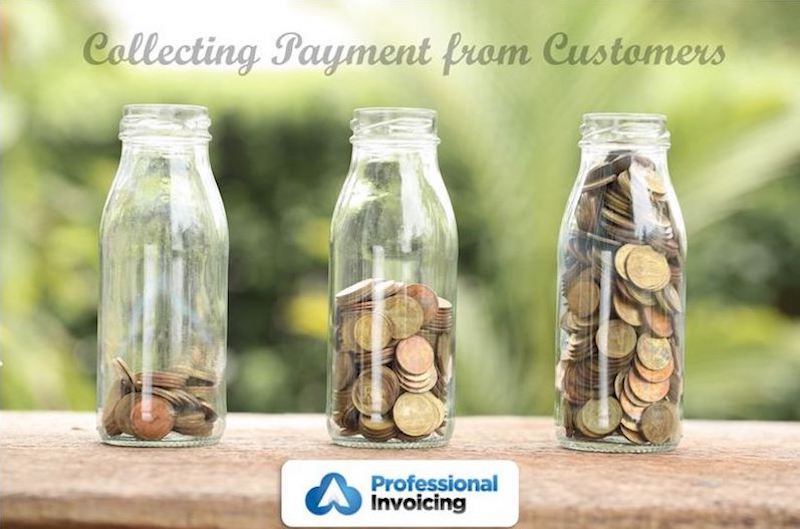Top Tactics for Collecting Payment from Customers Who Never Pay on Time

Businesses have a difficult time trying to serve customers when a group that constantly makes late payments exists. How do businesses deal with such customers? Some prefer to send emails and reminder emails for as long as it takes. Many others opt to hire debt collectors when the emails go unanswered. Some businesses prefer to institute lawsuits against clients who simply refuse to pay for services rendered.
In all these, what are the best tactics for collecting money clients owe?
Tightening Payment Terms
At times, clients pay late because of loopholes they notice in payment terms. For example, asking clients to settle their payments in 30 days gives them the “freedom” to pay after that period elapses. In such instances, the business should consider revising the terms to increase the chances of getting the payment earlier. A perfect illustration of this would be to change the terms from 30 days to 15 days. This way, clients pay within the same month.
Wide-Ranging Payment Options
Some clients pay late because they have fewer payment options to choose from. In other words, you limit them to only a few payment options. Why can’t the business consider accepting debit cards and credit cards too? The fact that it only takes a few days to clear payments made to businesses using such options makes them more attractive. All options you choose should give clients a simpler, efficient, and trouble-free payment procedure.
Tracking Invoices
Do you know the number of invoices clients are yet to settle? Do you know how many invoices clients have settled? It is difficult to track such matters manually. Instead, a better approach is to track everything digitally. Use the appropriate software for this. Professional Invoicing is one of the best in this regard. What is more, some software is capable of alerting you about emails that clients are yet to open and read.
With the right software, you can identify the clients who need reminders and those who don’t. Use the software to track deadlines too.
Hire Debt Collectors
Do not waste precious time acting as a debt collector. Instead, look for and hire the best debt collector you can afford to follow up this issue with clients who are not willing to settle their accounts quickly. Assuming the role of a debt collector changes how the clients perceive you. In fact, it is one of the fastest ways of destroying a business-client relationship. Debt collectors often have to act tough, but you don’t, especially if you want repeat work from these clients.
Employ these and other tactics for collecting to encourage clients to pay on time.
Invoice Payment Terms: How to Define and Communicate Them to Your Customers
All small business owners grapple with customers who seem unwilling to pay on schedule as agreed and stipulated in the contract. Lack of timely payment often has nothing to do with any failure on the owner’s part. Most times, it has everything to do with clients who cannot pay on time even if their lives depended on it. Luckily, business owners are not entirely helpless on such matters. They can define and communicate the appropriate invoice payment terms to clients.
Before defining or communicating these terms, the owners have to understand them first.
Importance of the Terms
They have to appreciate the importance of these terms too. Clear terms are beneficial to both parties; that is, the seller and buyer. Clear terms clarify where customers stand. The terms help clients to understand what is expected of them after receiving the product or service they need. On the other hand, such terms help businesses to improve their cash flow, which then enables them to continue functioning and serving more clients. Clear payment terms act as incentives that motivate customers to act in a manner acceptable to the business.
All common invoice payment terms are worth defining and communicating with clients. Such terms include:
§ Payable on Receipt § Net 30 § 2/10 Net 30
Define the terms for the clients’ benefit.
Discuss the Terms Right at the Start
Additionally, it is good to discuss issues regarding all these invoice payment terms upfront. Clients have to be part of these discussions. After all, they need to know what the terms mean. Share these terms early while negotiating other aspects of the contract or project. Use this opportunity to answer and address questions and objections or concerns from your clients. The discussions, clarification of terms, and answering questions should happen before any work commences.
Late Payment Terms
What about late invoice payment terms? These too should form part of the discussions going on early in the relationship or negotiations. Business owners hate the idea of spending precious time chasing clients for payment. Tighten payment terms to reduce the likelihood of spending too much time chasing late payments. Instead of 30 days, let all clients know you expect them to pay whatever they owe within 15 days. Let clients know that they will have to pay late payment fees for any delay beyond the agreed date.
Everything you discuss and agree on depends on proper and effective communication. Good communication eradicates confusion. Customers need you to clarify all these matters so they do not fall foul of them.
Therefore, start defining, clarifying and communicating invoice payment terms today.
![]()
1 Month Free Trial. Just Sign Up, No Credit Card Required.
